Korean National Association of Hawaii
하와이 대한인국민회
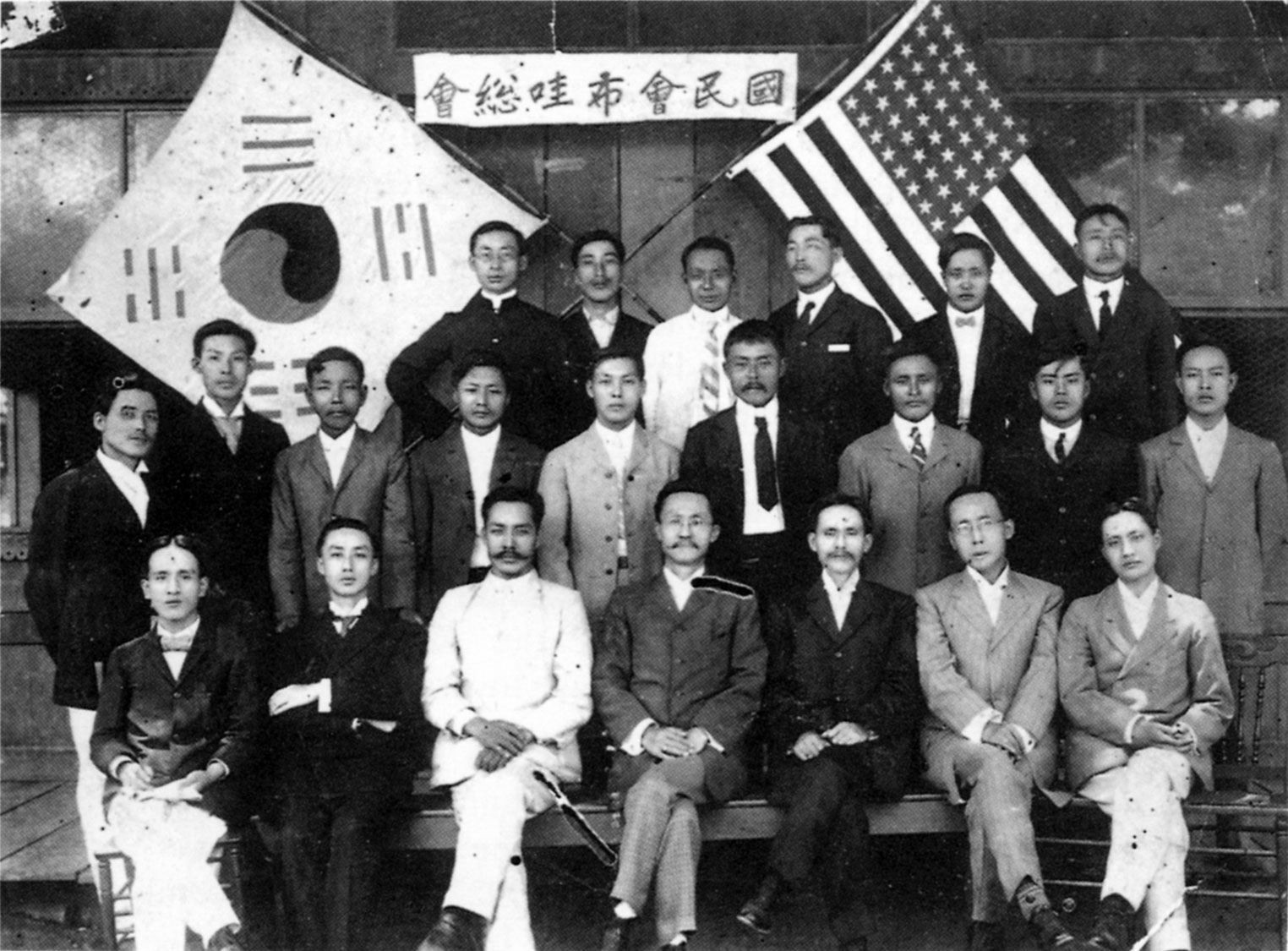
The Korean National Association (Kook Min Hur; 국민회) was established in February 1909 by merging Hapsong HyeopHoi (United Korean Society, 1907-1909) in Hawaii and Konglip HyeopHoi (United Korean Association, 1905-1909) in San Francisco. Under the Central KNA, there were two regional headquarters: Hawaii (Honolulu) and North America (San Francisco). It was established for the purpose of uniting all Korean in the United States for a common cause. The establishment of KNA was motivated by the desire to liberate Korea from its occupation by Japan in 1905, and to protest against the deposing of King Kojong in 1907.
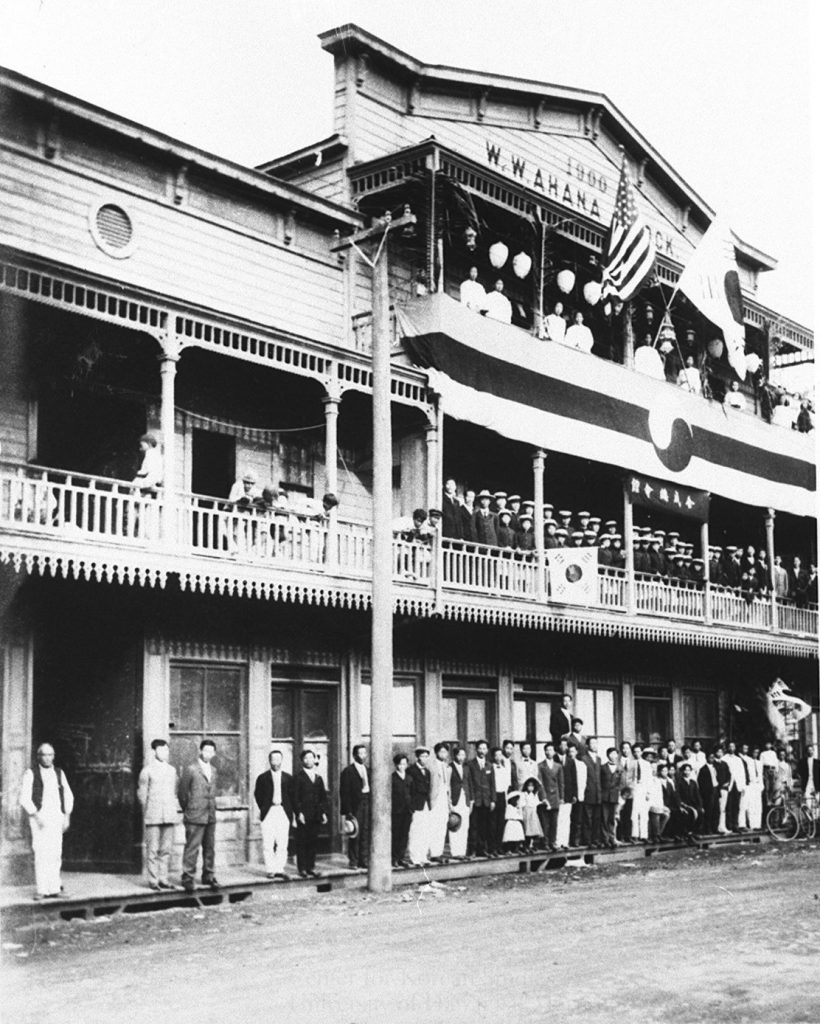
The purposes of KNA were 1) to promote the education and financial advancement of Koreans, 2) to proclaim the liberty and equality of Koreans, and 3) to regain Korea’s sovereignty. Won Myong Chung was the first president of Hawaii KNA.
KNA rented a small building at 1313 Miller Street and immediately started publishing Shin Han Kook Bo (The United Korean News) using Korean typeset which was used by the HopSeong HyeopHoi for its HopSeong Sinbo. In August 1913, the newspaper masthead was changed to Kook Min Bo (Korean National Herald).


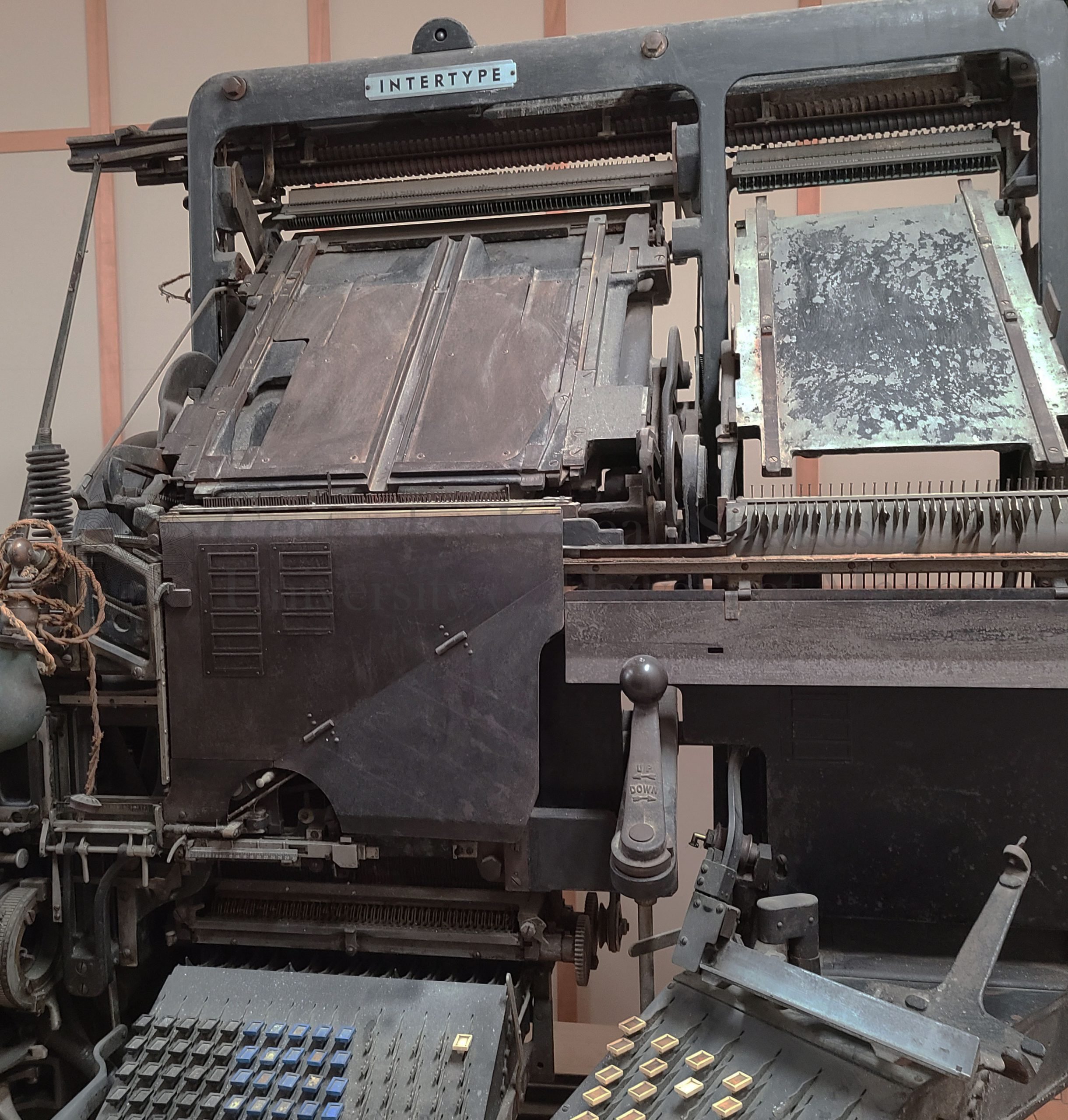
On Monday, February 2, 1914, KNA celebrated all day long its fifth anniversary with a parade from the Oahu Railroad Station to the Korean Central School at Punchbowl & Beretania street, a demonstration of military maneuvers, and music/dance programs. This was the first Korean “festival” in Hawaii.
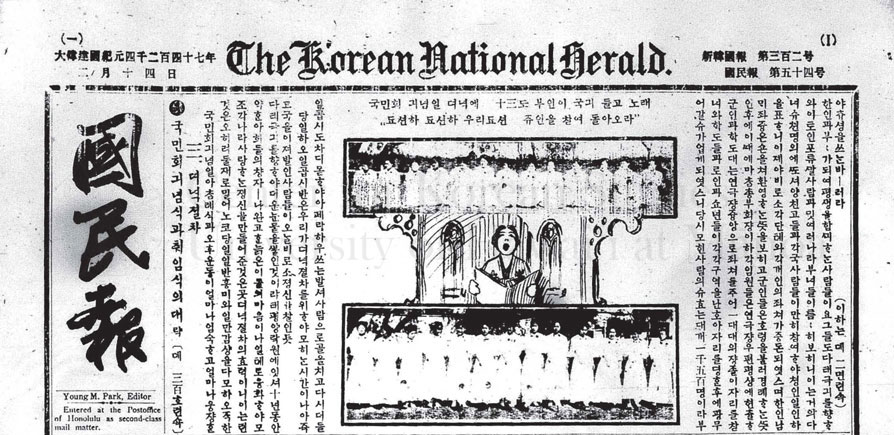
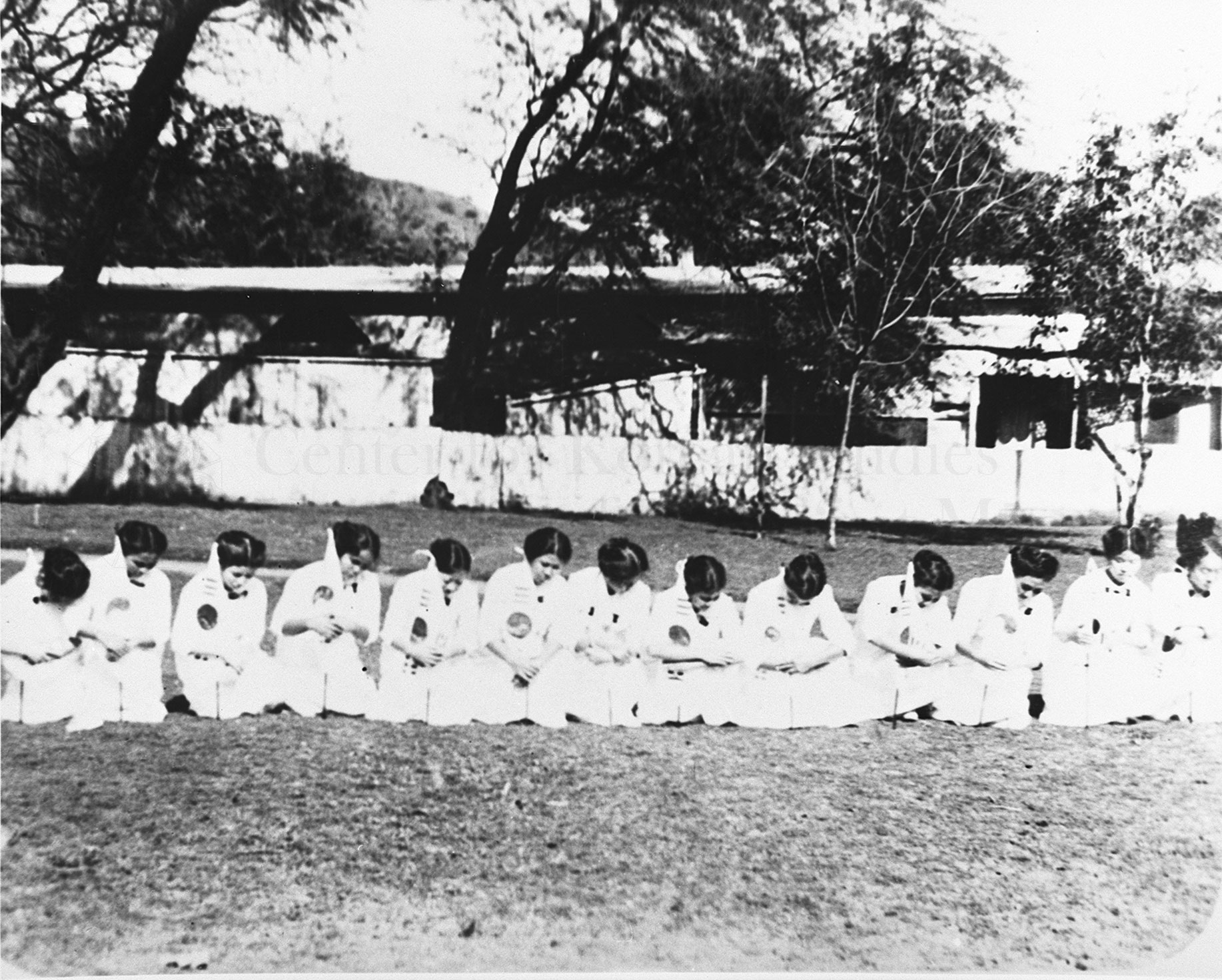
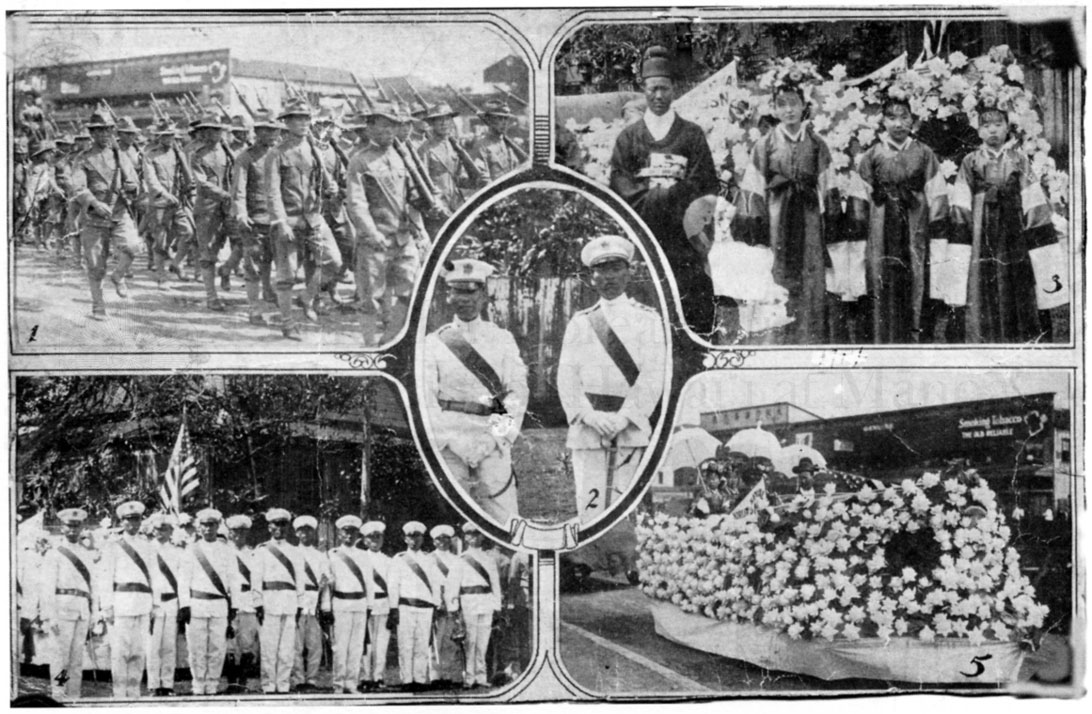
In December 1914, KNA constructed its two-story headquarters at 1306 Miller Street. It was KNA's home until July 1946 when the Hawaii Territorial government did a friendly condemnation to purchase the site for the expansion of the Governor’s residence. KNA moved to 2756 Rooke Avenue.
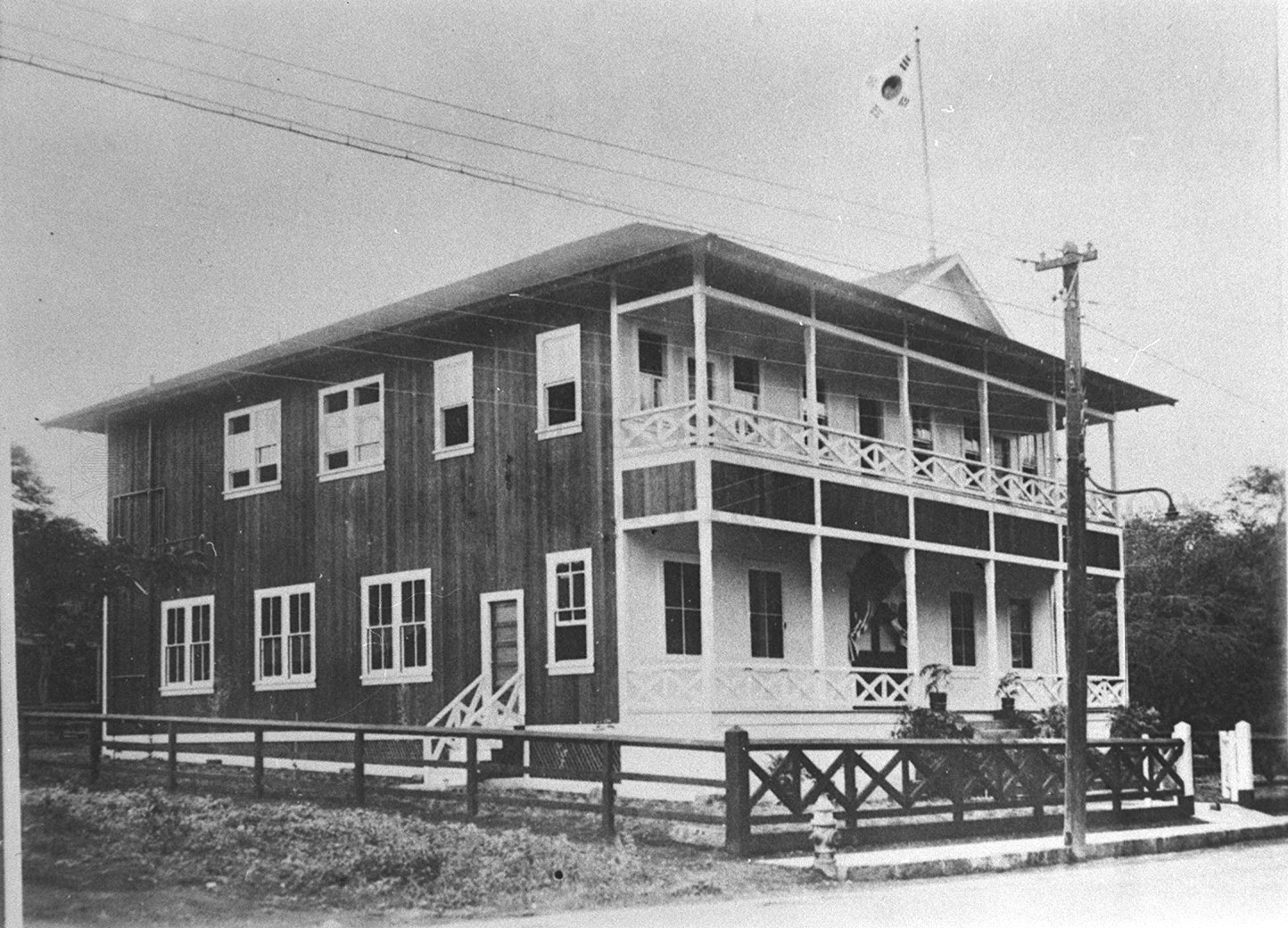
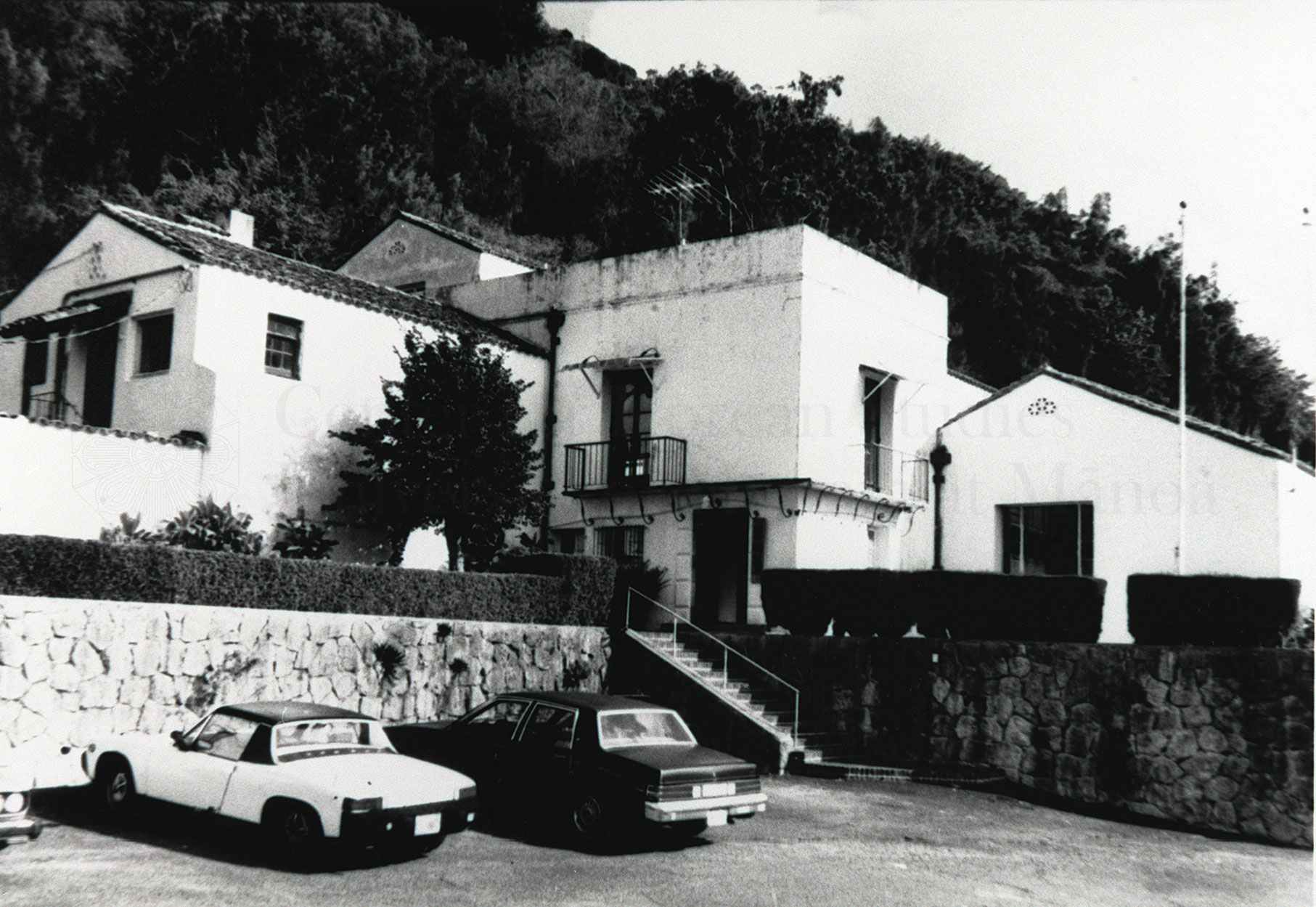
The first event hosted by the National Association related to the homeland was the second anniversary of the 'Kŏnwŏnchŏl 건원절', which was the 36th birthday of Emperor Sunjong, on March 25, 1909. An article and photo about Kŏnwŏnchŏl appeared in the United Korean News, March 30, 1909.
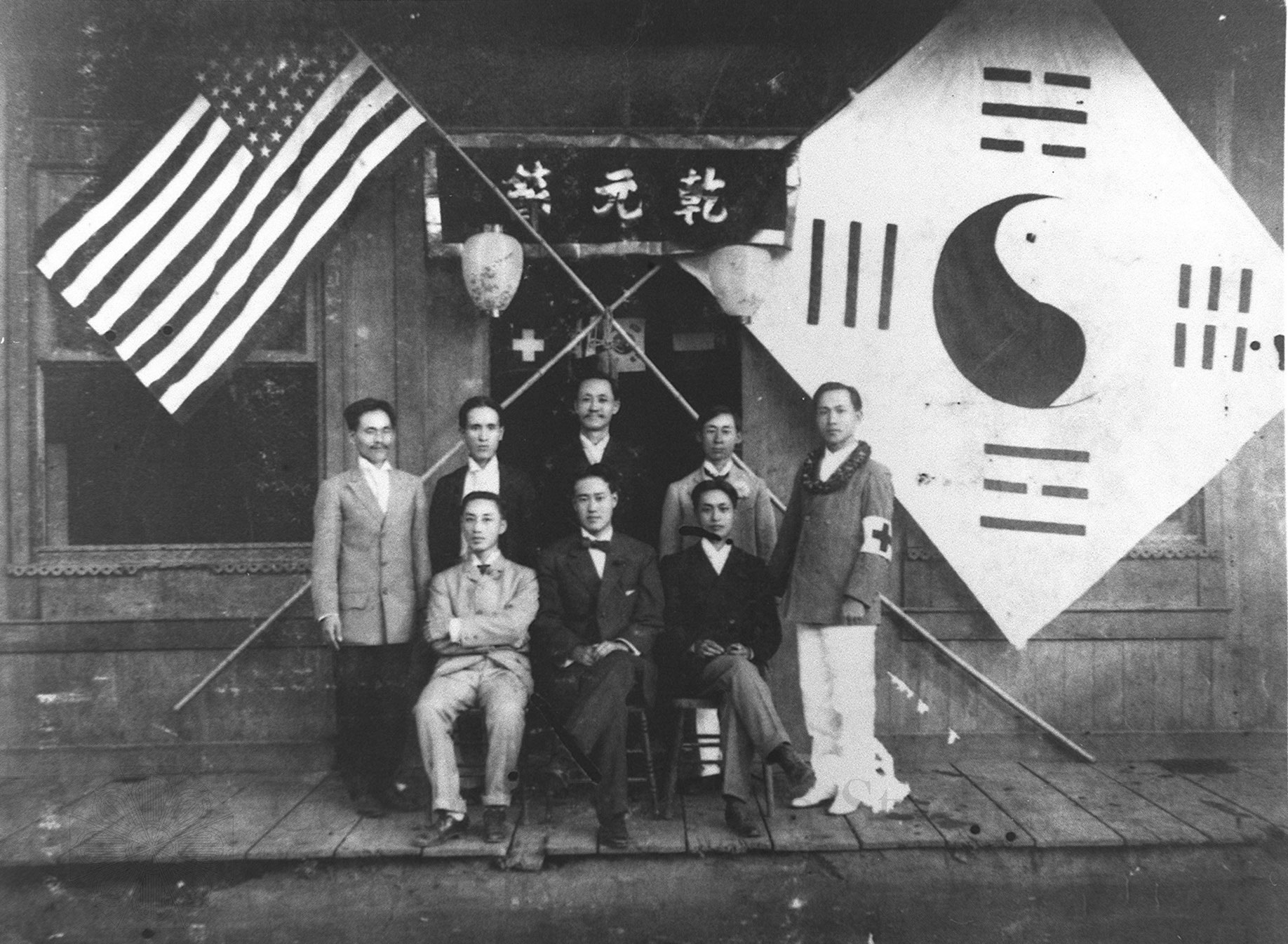
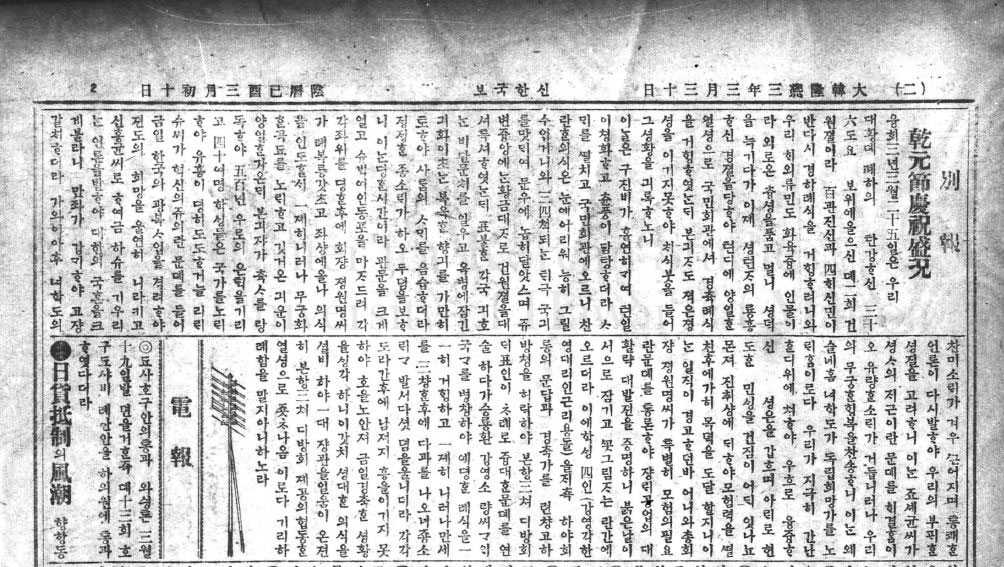
On April 12, 1919, KNA celebrated the March First Independence Movement as '독립경축일 (Celebration of Independence)'. About 1,200 people gathered at the Korean Christian Institute 한인기독학원 to celebrate. During its active 50-year history, KNA financially supported educational endeavors and socio-political activities to regain its mother country’s sovereign powers.


KNA also carried on welfare programs for its aging members. KNA was able to continue its activities by collecting various fees such as a membership fee (duty), an education fee, special activity fees, etc.
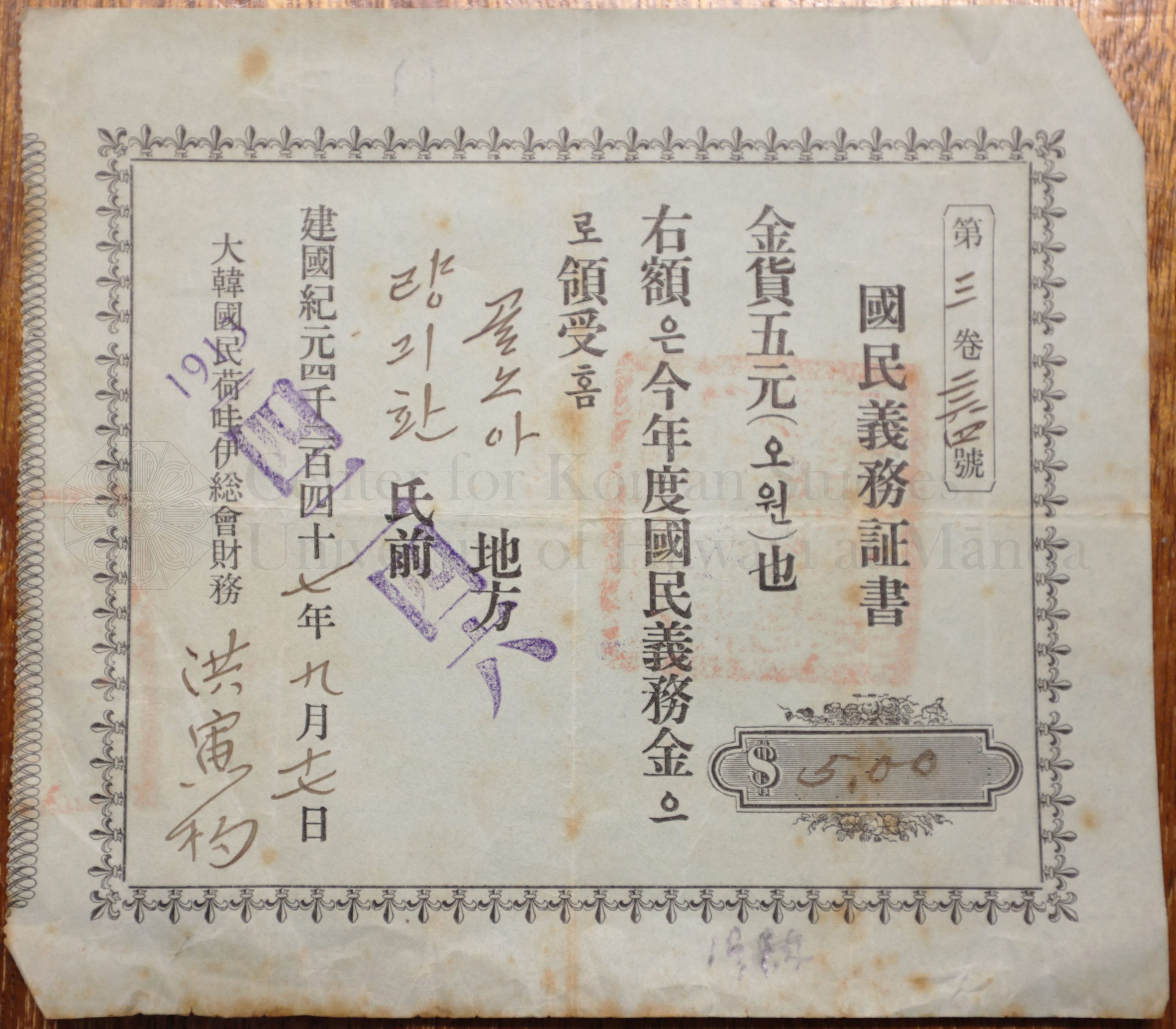
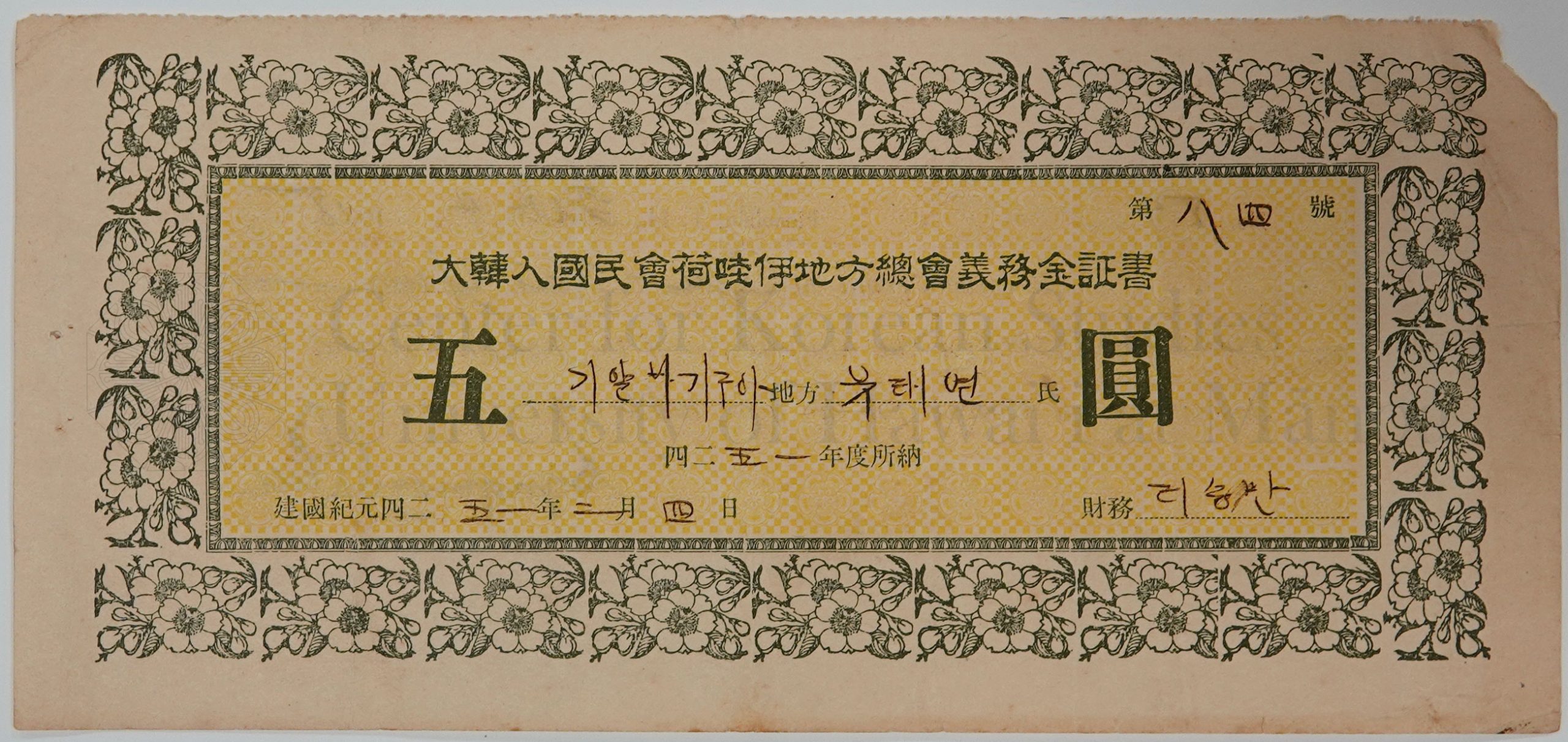
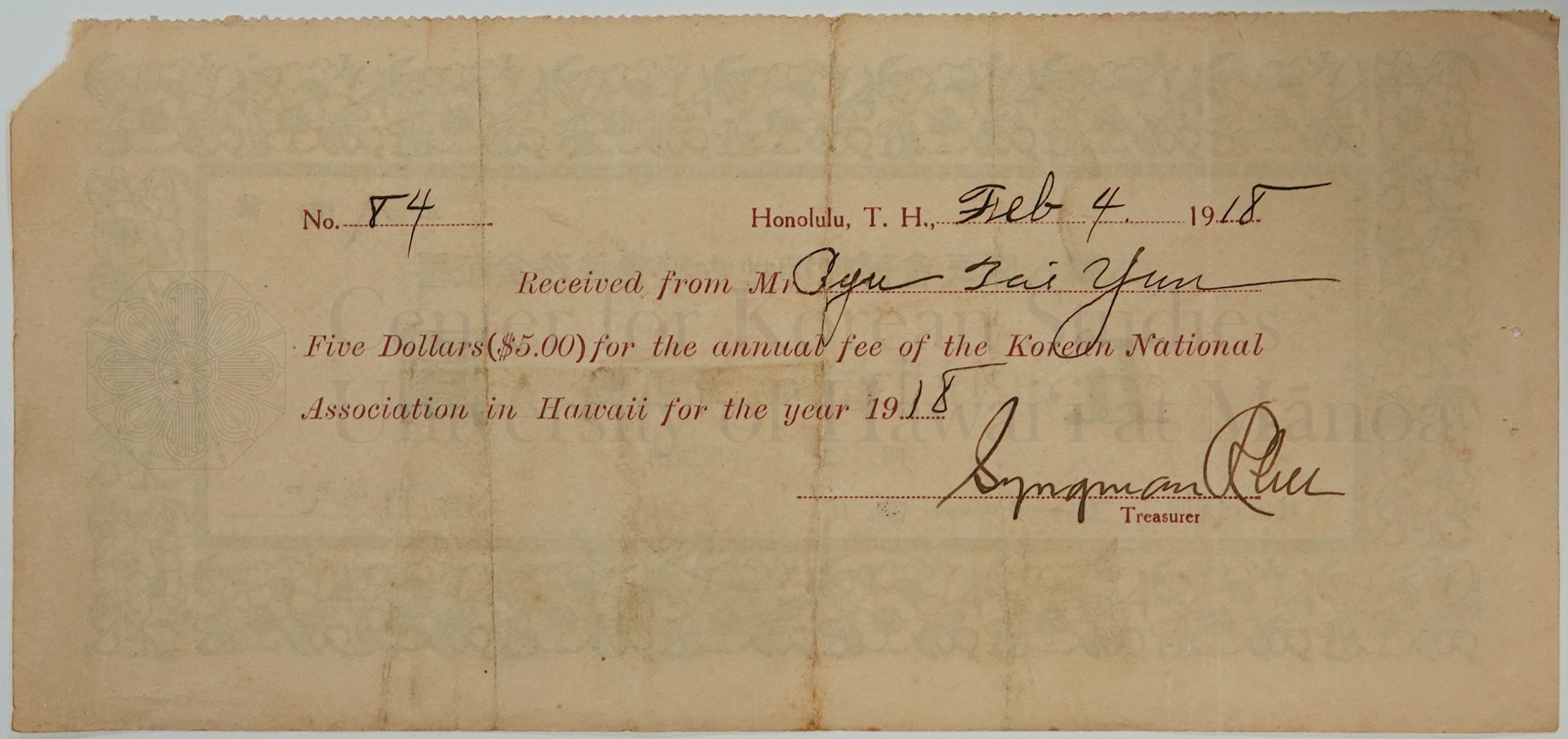
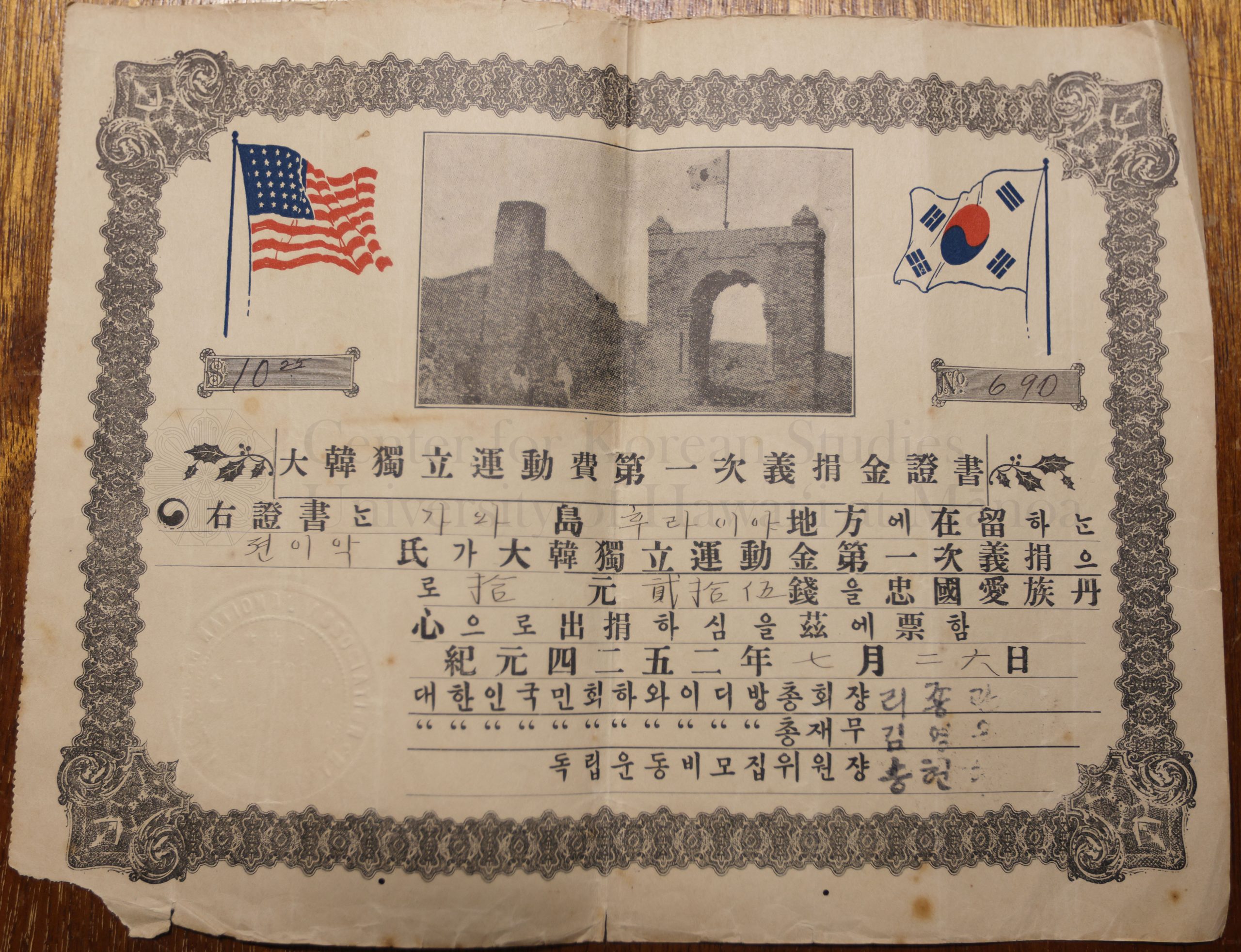
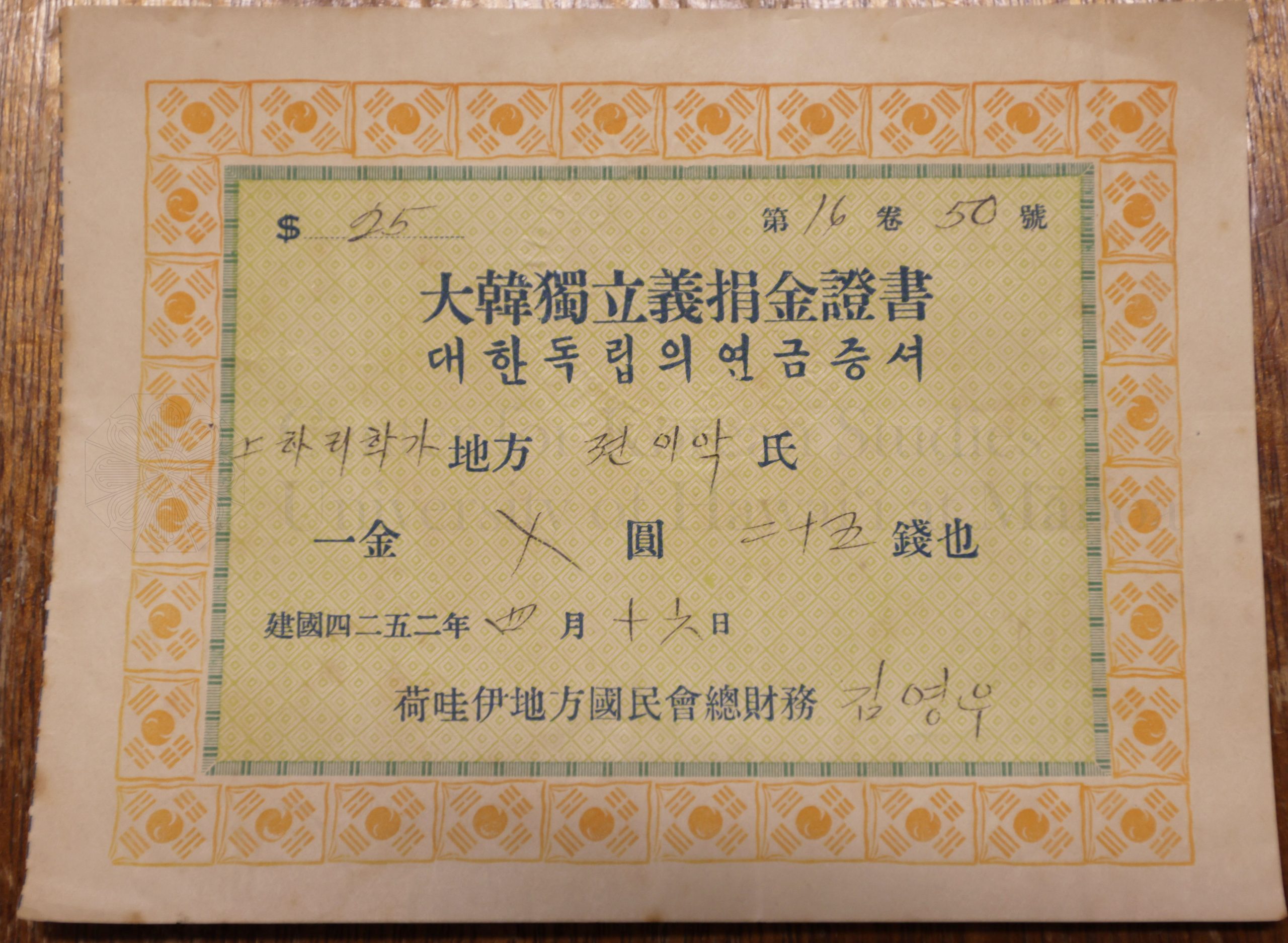
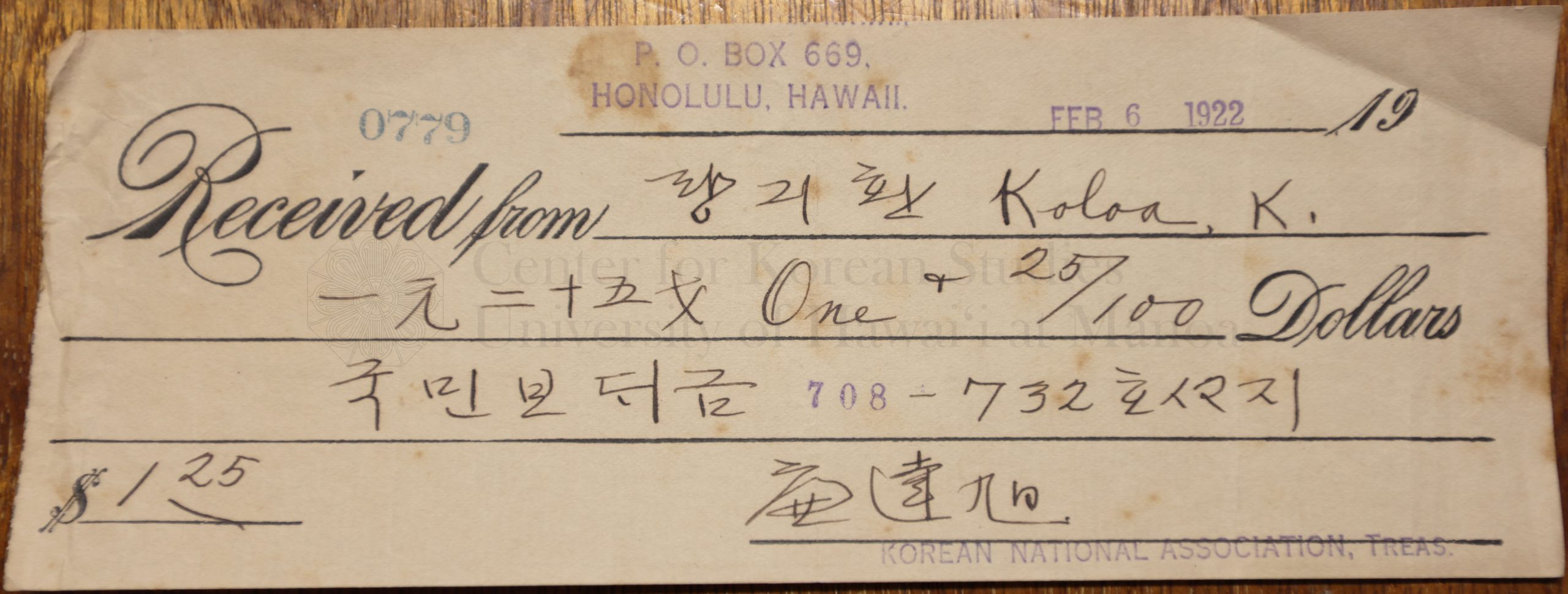
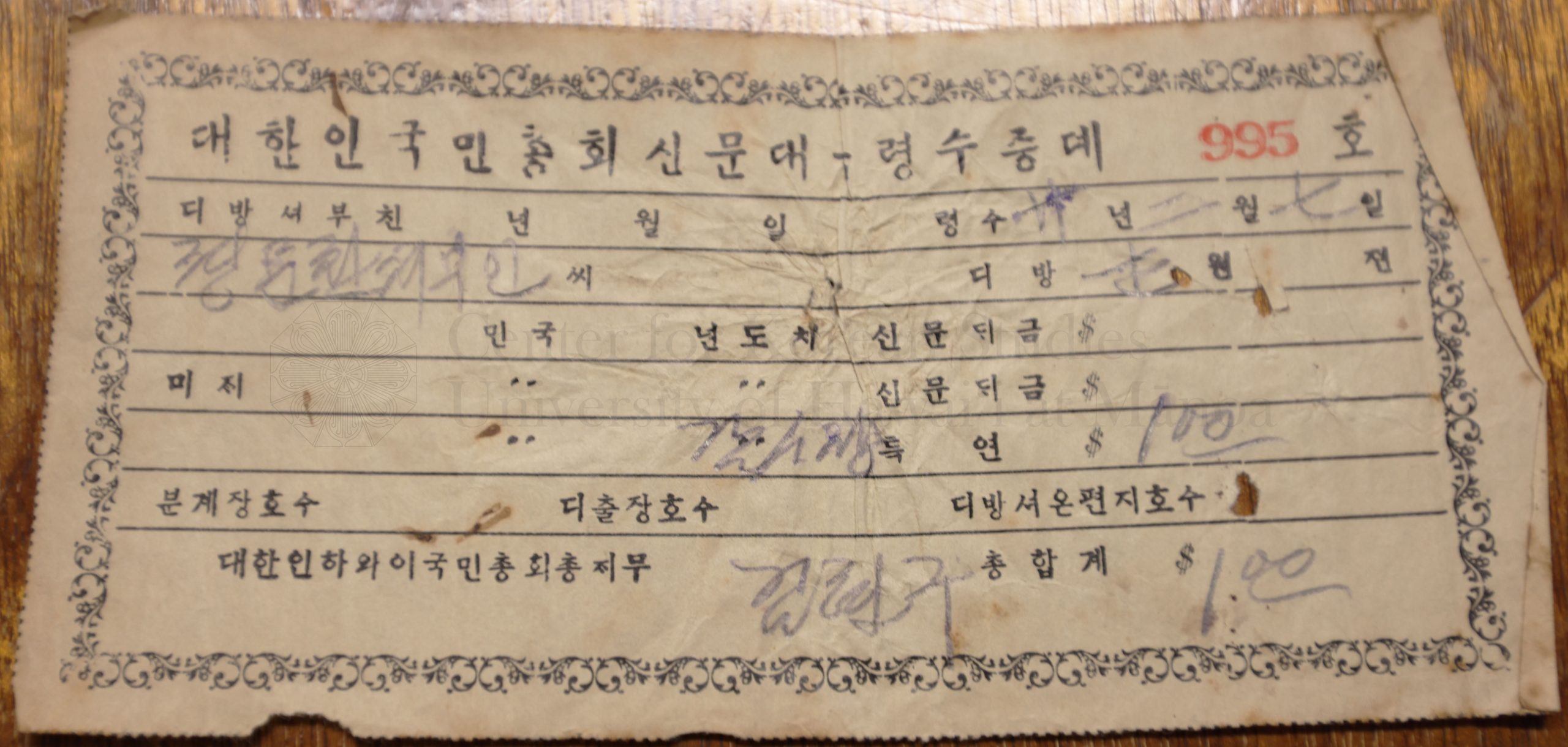
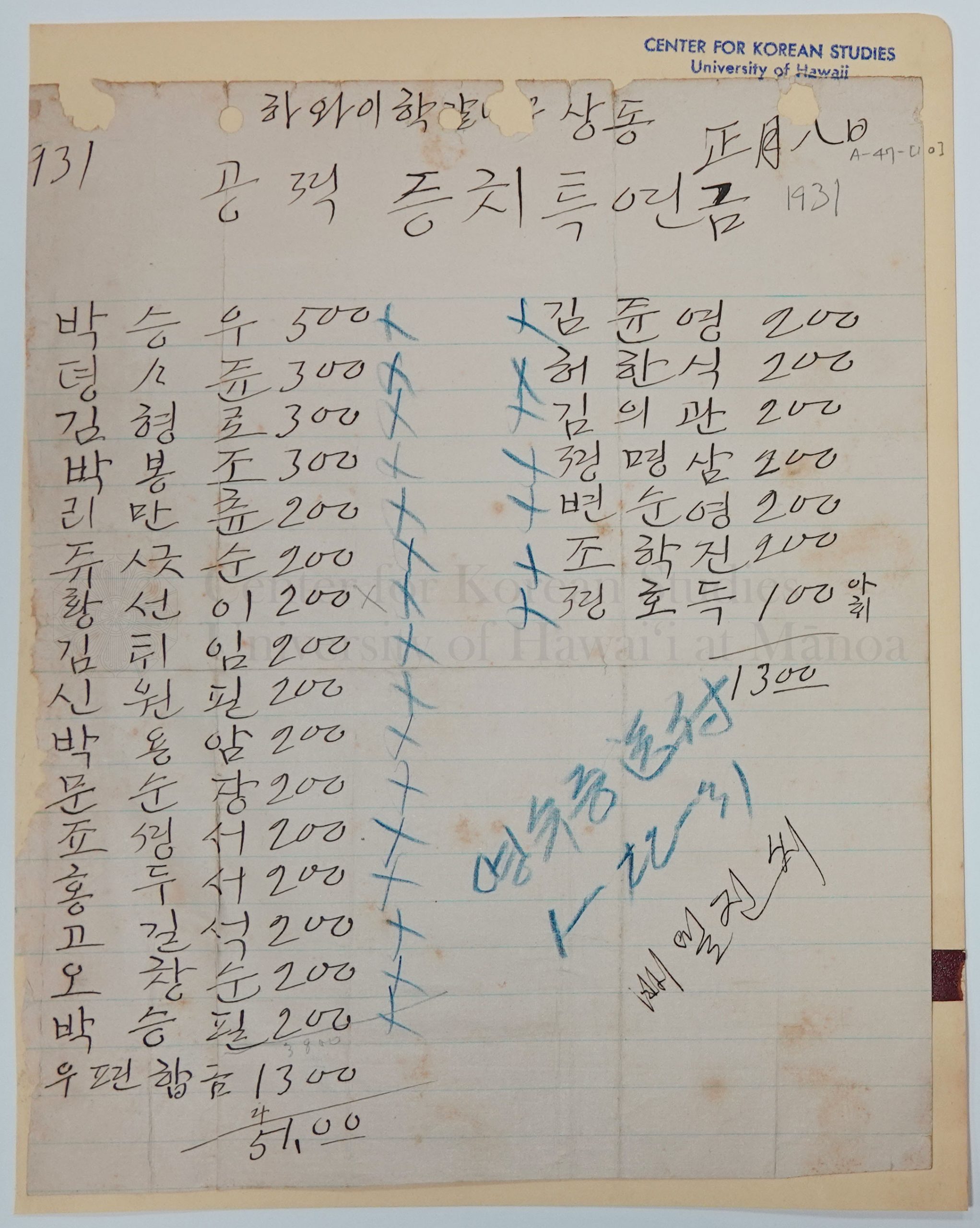

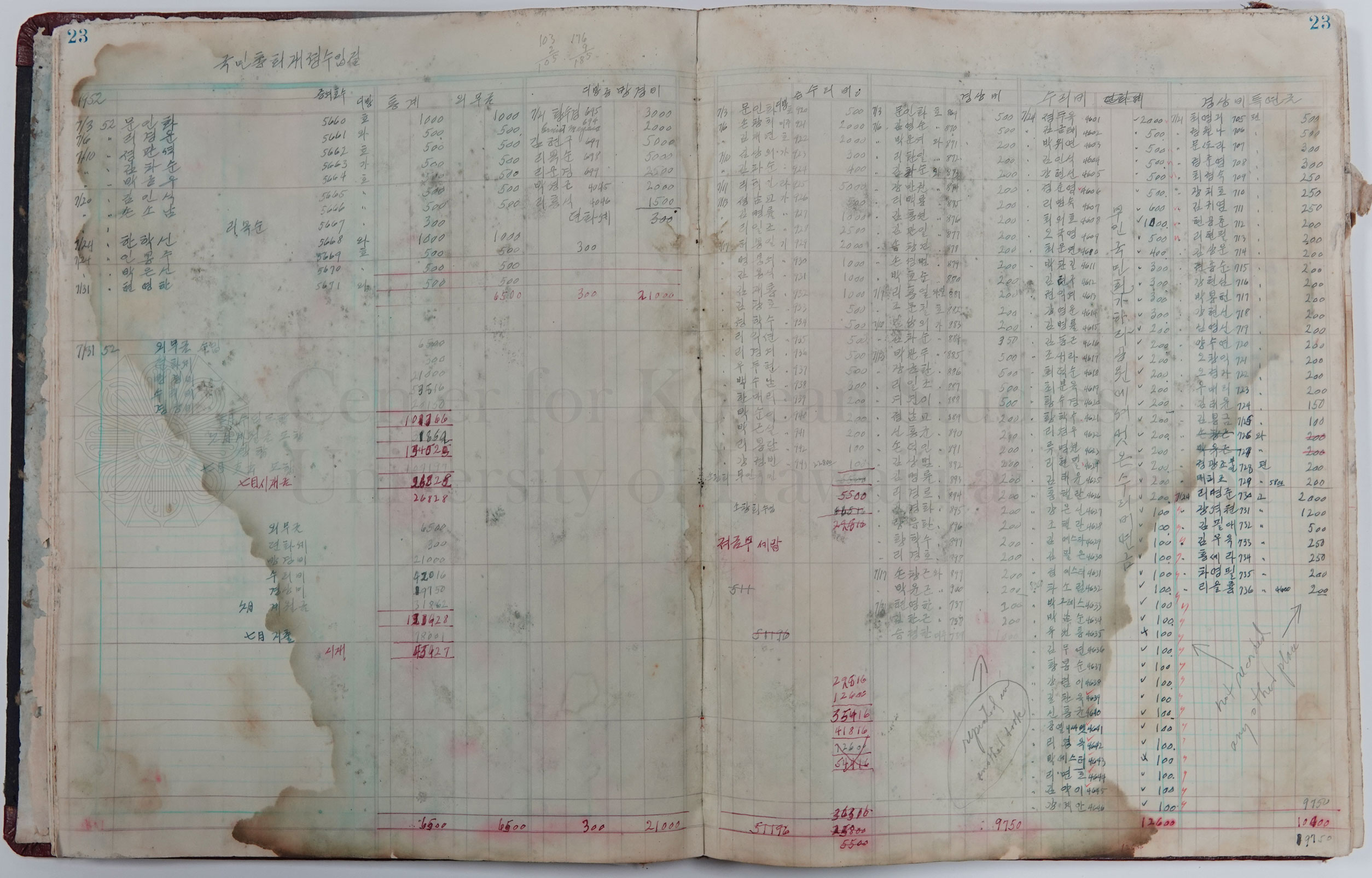
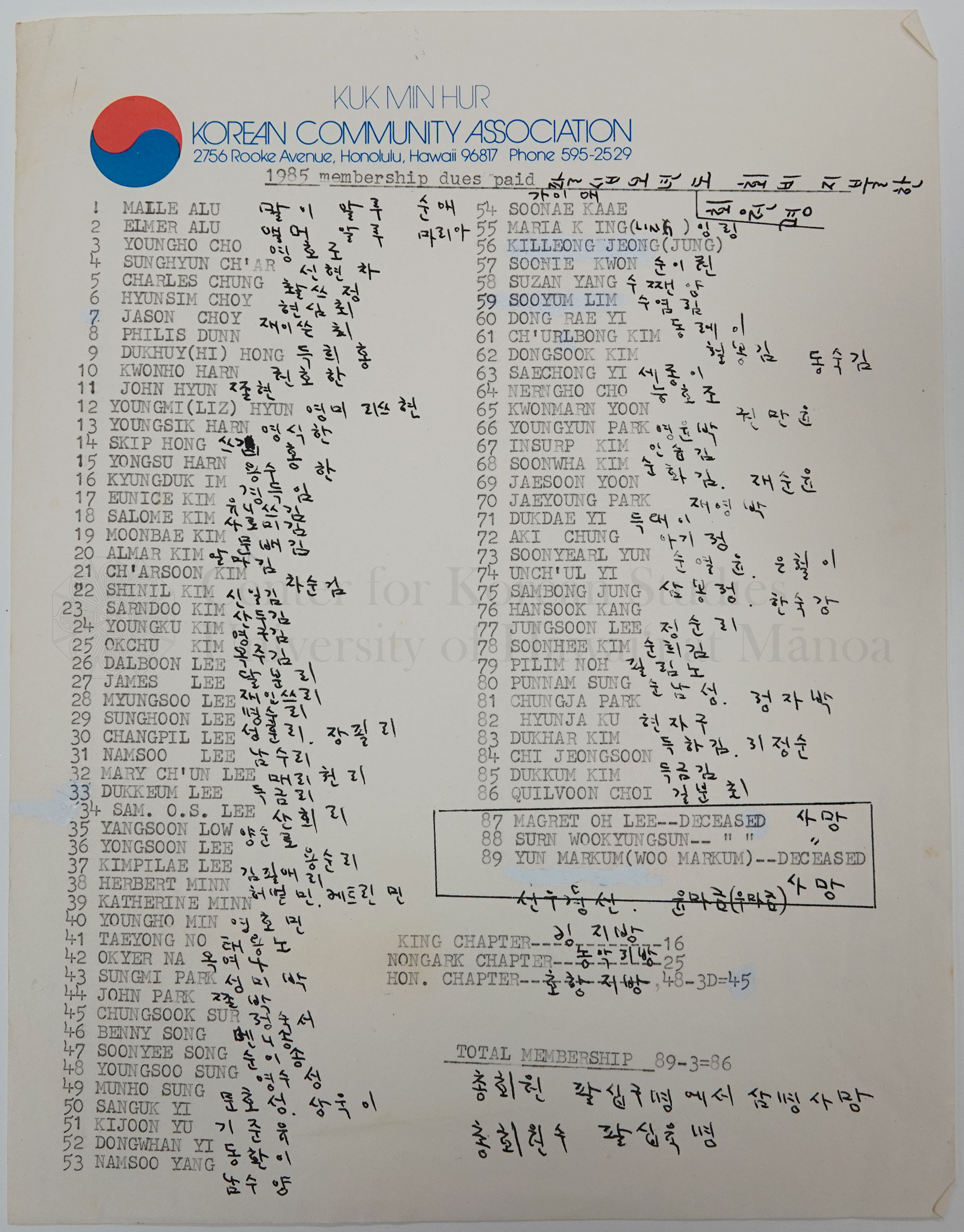
In December 1930, the Korean Women's Relief Society was divided into two factions, the Dongji Hoi group and the KNA group. They shared the same name, Korean Women's Relief Society until 1949. On January 28, 1949, the KNA-side group changed its name to Korean National Women’s Society 대한국민부인회. Although the Korean National Women’s Society was a separate organization from the KNA itself, they worked very closely with each other.

When the original KNA members began passing on, younger second-generation immigrant members started to join KNA. Nonetheless, changing socio-political conditions in the Hawaii Korean community saw the membership reduced to 50 by the end of 1959. The 1962 By-Laws changed KNA's name to “Korean Community Association”, while keeping its Korean name 국민회. Despite KCA gaining some 60 new immigrant members owing to the Immigration Act of 1965, KCA was not able to carry on its activities and maintain its headquarters. In January 2002, the headquarters was sold. The remaining 21 KCA members reverted the name KCA back to Korean National Association in December 2002. In January 2004 the KNA was renamed to "Kook Min Hur Foundation" and the funds from the headquarters sale were designated to be used to support community programs, such as the Kook Min Hur scholarship at the Center for Korean Studies.
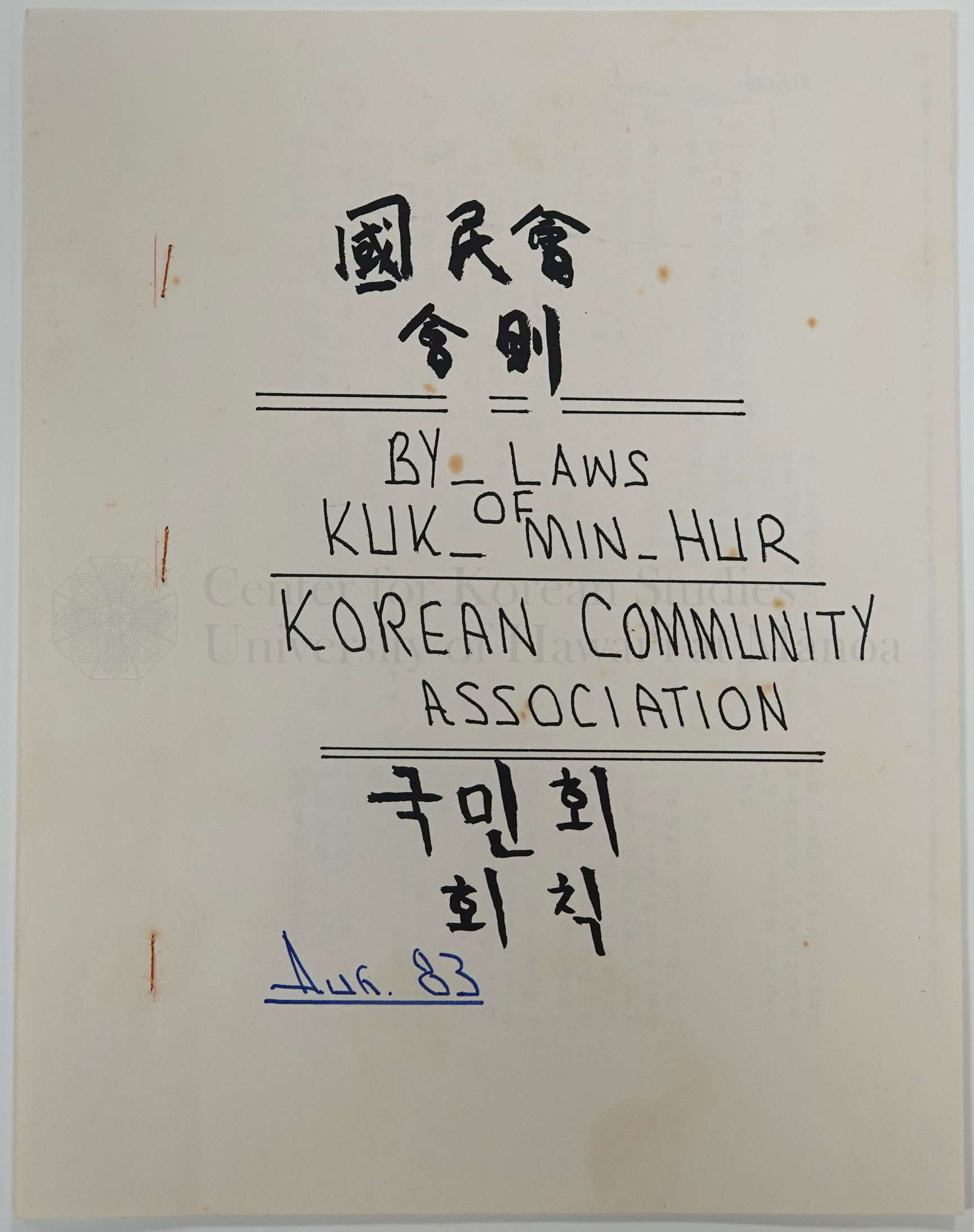

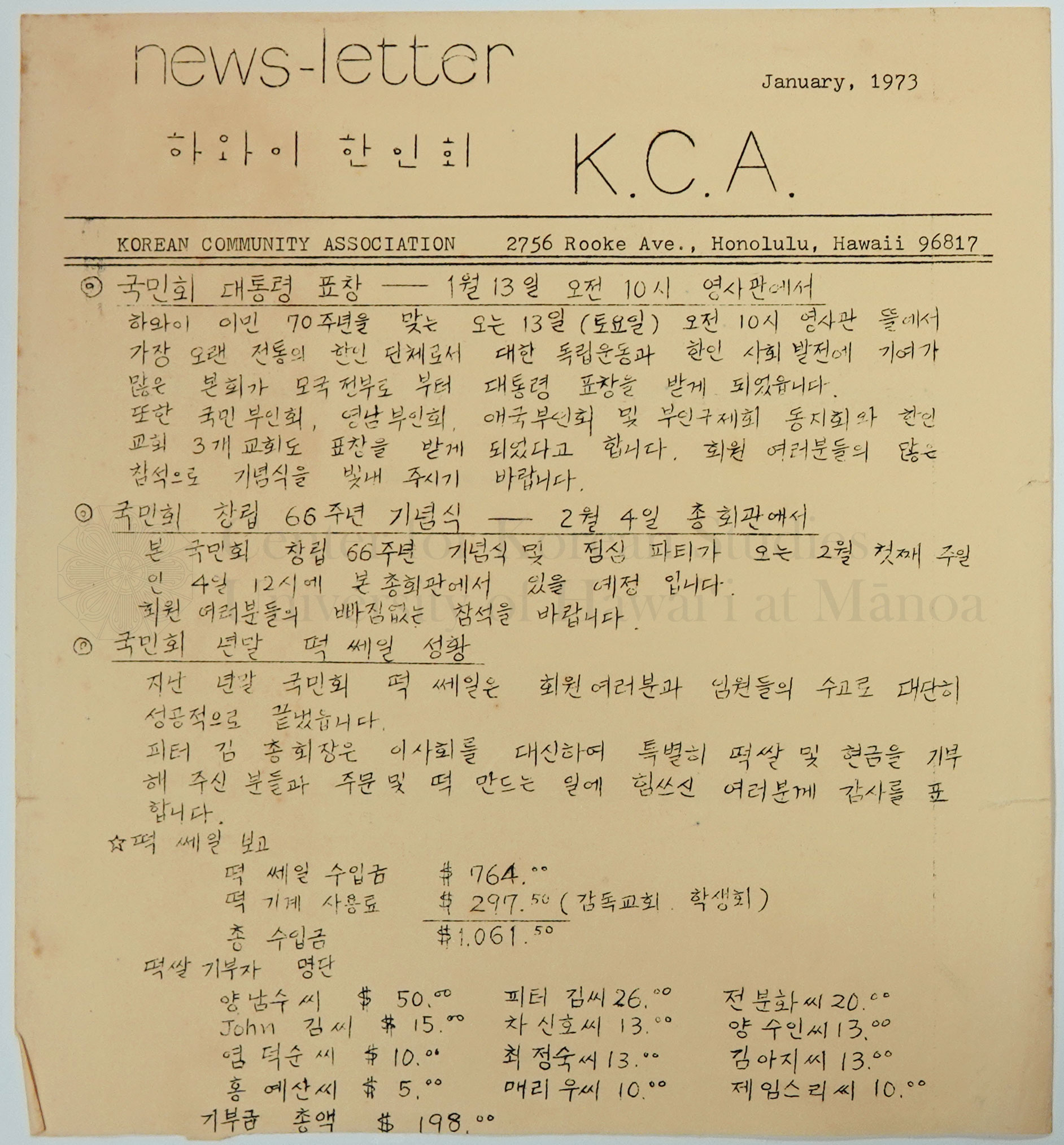
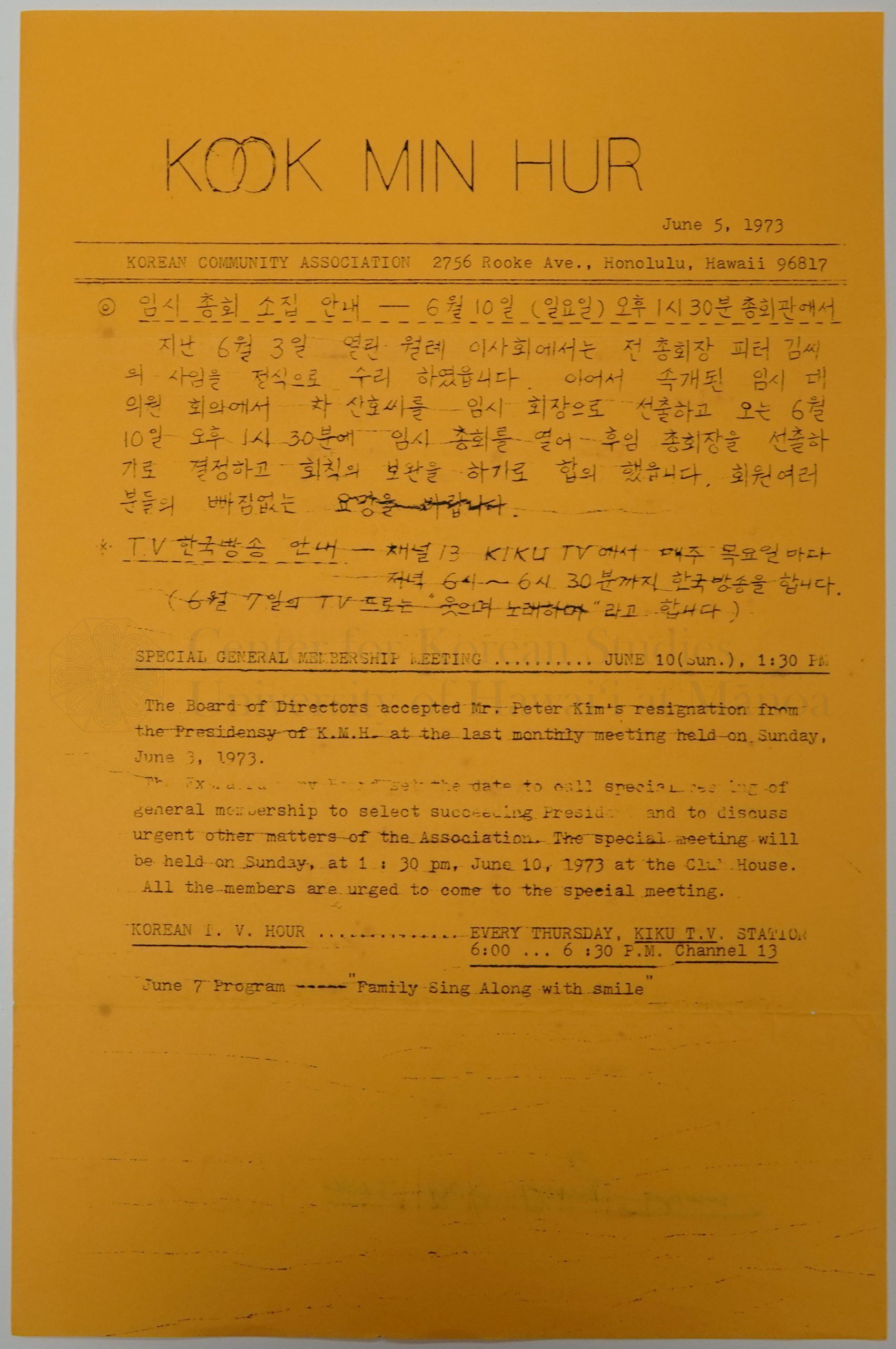
The Kook Min Hur of Hawaii Collection in the Center for Korean Studies consists of some documents and photos from the organization. The majority of the collection was compiled by Duk Hee Lee Murabayashi in the process of writing Hawaii Daehanin Kook Min Hur Baeknyonsa, A Centennial History of the Korean National Association of Hawaii (2014). The collection contains administrative records, membership records, financial records, property records, minutes, and official correspondence of Kook Min Hur from 1912 through 2002.
A major collection of the Korean National Association was transferred to the Independence Hall of Korea in 1983-1984. A virtual exhibition for the KNA collection, including about 10,000 pieces of material discovered in the attic during the restoration work of the Korean National Assembly in Los Angeles in 2003, is available at the Independence Hall of Korea's cyber exhibition of Korean National Association Artifacts.
In addition to the Kook Min Hur Collection, the CKS holds a separate collection of Kook Min Bo (국민보; Korean National Herald), a weekly newspaper published by KNA. In 2021, as part of the Korean Newspaper Digitization Project, the digital edition of Koook Min Bo was published by the CKS, which is a compilation of the digital images and scanned pages that the Center’s researchers could collect through various channels. It covers the newspapers from 1909 to 1968. The digital edition of Kook Min Bo will be available online soon.
The exhibition was prepared by Do Young Park & Duk Hee Lee Murabayashi.
Reference
- Committee on the 90th Anniversary Celebration of Korean Immigration to Hawaii. (1994). Their footsteps: A pictorial History of Koreans in Hawaii since 1903. Seoul: Ye Sun Co., LTD.
- Duk Hee Lee Murabayashi. (2013). A Centennial History of the Korean National Association of Hawaii. Seoul: Yonsei University Press.
- Duk Hee Lee Murabayashi Collection, Center for Korean Studies, University of Hawaii at Manoa.
- Kook Min Hur (Korean National Association) Records, Center for Korean Studies, University of Hawaii at Manoa.
- Kook Min Bo Collection, Center for Korean Studies, University of Hawaii at Manoa.
Donation
If you would like to make a donation, please click here. For specific use of the donation, please note it in the "Additional Donor Information/Special Instructions" section.
